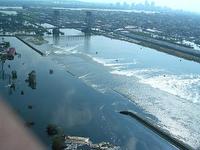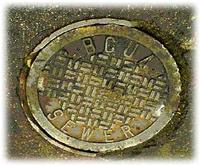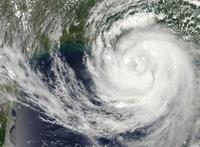-
Senate panel’s report harshly criticizes role, utility of DHS fusion centers
A 2-year bipartisan investigation by the U. S. Senate Permanent Subcommittee on Investigations has found that DHS efforts to engage state and local intelligence “fusion centers” has not yielded significant useful information to support federal counterterrorism intelligence efforts; the report says that senior DHS officials were aware of the problems hampering effective counterterrorism work with the fusion centers, but did not always inform Congress of the issues, nor ensure the problems were fixed in a timely manner; DHS estimates that it has spent somewhere between $289 million and $1.4 billion in public funds to support state and local fusion centers since 2003 (the report says that these are broad estimates which differ by over $1 billion); the Senate investigation raises questions about the value this amount of funding and the contribution the fusion centers make to the U.S. counterterrorism efforts; not everyone agrees with the report; Rep. Peter King (R-NY), chairman of the House Committee on Homeland Security, said: “I agree with Chairman Joe Lieberman and Ranking Member Susan Collins [of the Senate Committee on Homeland Security] that the subcommittee report issued this week paints with too broad a brush an incomplete picture that fails to recognize many of the important contributions that fusion centers have made in securing our Homeland”
-
-
The Western hemisphere’s largest seawater desalination plant to be built in California

The San Diego County Water Authority announced plans to build the Western hemisphere’s largest seawater desalination plant; the plant will produce fifty million gallons of fresh water per day, enough to supply about 7 percent of the San Diego region in 2020
-
-
Experts trying to determine cause of a giant Louisiana sinkhole

The earth near Bayou Corne, Louisiana opened on 2 August: a 300-foot-wide sinkhole, with depth varying between 50 and 300 feet, suddenly opened up in an area, and the authorities have been trying to determine whether the sinkhole was caused by the collapse of an abandoned brine mining cavern along the margin of the Napoleonville Salt Dome or by something else
-
-
Debate over causes of levee failure during Katrina intensifies

A court case in which residents of two sections of New Orleans are suing a construction group has put millions of dollars at stake; residents of the Lower 9th Ward and St. Bernard Parish residents claim that Washington Group International (WGI), an Amy Corps of Engineers contractor, removed several buildings and pilings from land along the Industrial Canal as part of a construction plan to expand the canal’s shipping lock, then failed adequately to plug the holes left behind; the holes allowed rainwater from Hurricane Katrina to seep underneath the 14-foot wall, essentially lifting the wall and allowing the areas to be flooded
-
-
GAO: Easily obtained counterfeit IDs present real risks

The Government Accountability Office (GAO) released a report in which the agency demonstrates that counterfeit documents can still be used easily to obtain valid driver’s licenses and state-issued identification cards under fictitious identities; GAO recommended that DHS exert more assertive leadership in an effort to correct the problem
-
-
Repair bill for Miami-Dade water and sewage system: $12 billion
Repairing, replacing, and rebuilding 13,000 miles of old water and sewage pipes and the treatment plants they connect to could cost Miami-Dade County, Florida more than $12 billion dollars over the next fifteen years; this is a staggering amount – made even more so in light of the fact that this is considerably more than the original estimate of $1 billion
-
-
Georgia’s Plant Vogtle reviving hopes for nuclear power in U.S.
Plant Vogtle, located in Burke County, Georgia, is one of the most watched construction projects in the world; it is currently going through a $14 billion dollar expansion, which includes the first new commercial reactors built in the United States in decades
-
-
Desalination losing ground as a solution to California’s chronic water shortage
According to the July 2011 census, more than thirty-seven million people live in California, increasing the pressure on the state’s water sources; desalinating sea water as a solution to the scarcity of fresh water is not a new technology — it has been around for more than four decades — but it has more recently been considered as a way to address California’s chronic, and growing, water shortage; a closer examination of the technology and its cost has cooled the initial enthusiasm for it
-
-
Maryland rolls out public safety interoperable communication system
To be better prepared for man-made or natural disasters, Maryland leaders have decided to develop Twelve Core Capacities for Homeland Security, picking the deployment of an interoperable communications system as the highest priority; on 5 June 2012, Governor Martin O’Malley inaugurated the state’s new network, known as the Maryland First Responders Interoperable Radio System Team (Maryland FiRST)
-
-
New York unprepared for flooding, sea level rise

New York City may be a fast paced city of bright lights, sleek attitudes, fashion trends, and some of the best sports teams in the country, but underneath the glitz and glamour is a city which is not prepared for an act of God and which is being threatened by rising sea levels and severe storm flooding; “It’s a million small changes that need to happen,” one expert says
-
-
LAPD wants to know why you are taking these photos
If you live in Los Angeles and decide to take some pictures of a few monuments or public places to send to friends and family or for your own private collection, the Los Angeles Police Department (LAPD) may see you as a potential threat to public safety
-
-
Hurricane Isaac tests Loyola University's emergency response plans
In the days following Hurricane Isaac’s slow march across south Louisiana, Loyola University New Orleans administrators have been reviewing their response with a critical eye to ensure emergency preparations continue to evolve and meet the demands of each situation; beginning Tuesday, 28 August, New Orleans felt the first of Isaac’s high winds and heavy rains – but Loyola University was ready
-
-
Government considering options for post-biolab Plum Island

The Plum Island biolab, located on an 840-acre island of the tip of Long Island, has always been shrouded in mystery owing to the sensitive nature of the biological research done in its high-security facilities; now the center is being shut down by DHS, and the government is considering several options regarding what should be done on the island and the research facility
-
-
Many of the U.S. 20 million manholes are in need of immediate rehabilitation or replacement

The EPA estimates that there are about twenty million manholes in the United States – or one manhole for every 400 feet of pavement on average; many of those manholes are in serious decay or in need of immediate rehabilitation or replacement
-
-
As Hurricane Isaac beats on New Orleans, new infrastructure is holding up

This week, as Hurricane Isaac was threatening to replicate the physical damage that Katrina inflicted, it has become apparent that $14 billion worth of changes and improvements in infrastructure, planning, and emergency response procedures have given the city of New Orleans and the Gulf states the ability to withstand the worst of the storm
-
More headlines
The long view
States Rush to Combat AI Threat to Elections
This year’s presidential election will be the first since generative AI became widely available. That’s raising fears that millions of voters could be deceived by a barrage of political deepfakes. Congress has done little to address the issue, but states are moving aggressively to respond — though questions remain about how effective any new measures to combat AI-created disinformation will be.
